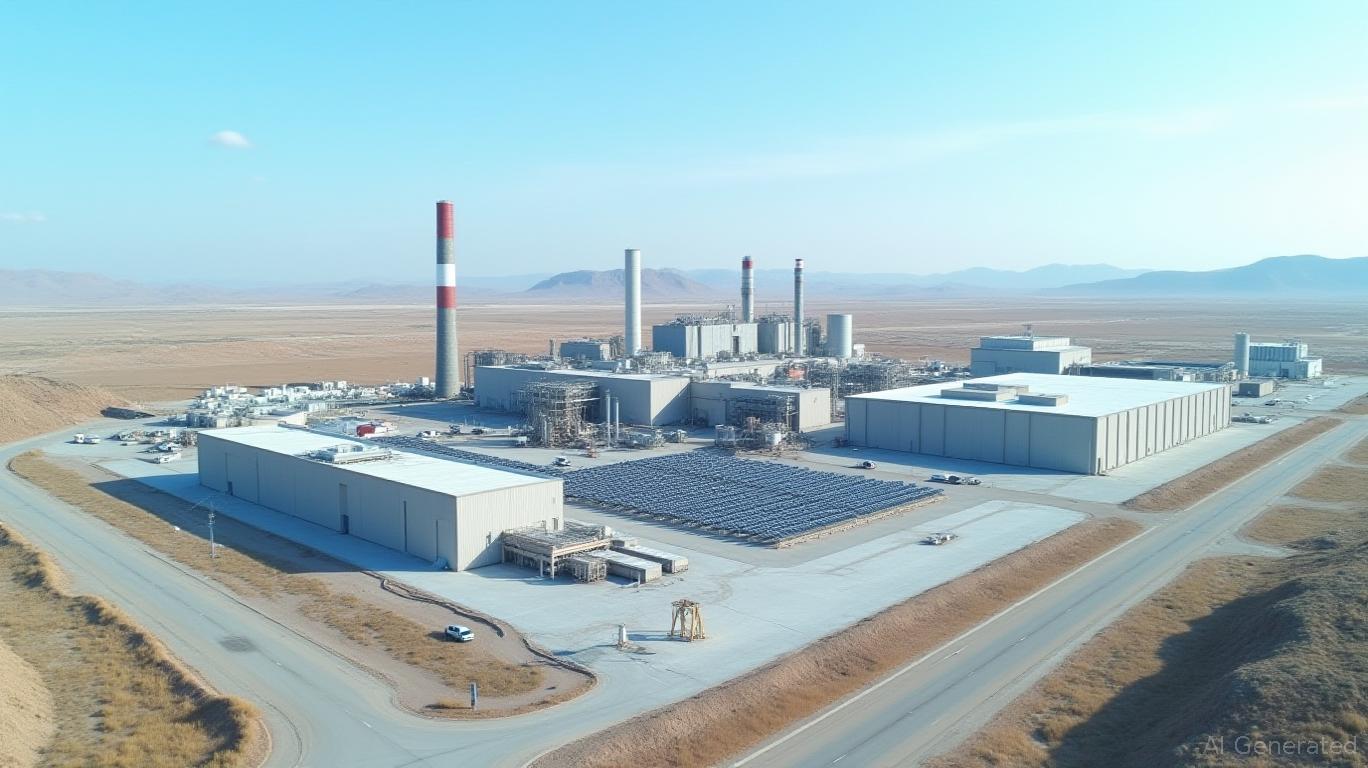AInvest Newsletter
Daily stocks & crypto headlines, free to your inbox
Kazatomprom, the world's largest uranium producer, faces a pivotal year in 2025 as it grapples with production setbacks while positioning itself to capitalize on a resurgent nuclear energy market. The company's revised production targets, driven by sulfuric acid shortages and infrastructure delays, underscore near-term headwinds. Yet, its robust financial performance, strategic inventory management, and a growing global footprint suggest a compelling risk-reward profile for investors seeking exposure to high-yield, sustainable energy assets.

Kazatomprom's 2025 production guidance was slashed by 12% to 25,000–26,500 tonnes due to sulfuric acid supply constraints and delayed mine infrastructure. The most glaring issue is at Budenovskoye LLP, where output was cut by 67.5% to 1,300 tonnes—a stark reminder of the operational risks in in-situ leach mining, which relies heavily on this chemical. Meanwhile, rising costs, including a 38% surge in materials expenses, have pinched margins. Even adjusted EBITDA growth of 14% in 2024 couldn't offset a 10% drop in operating profit.
Adding to these pressures is Kazakhstan's new Mineral Extraction Tax (MET), which will rise to 9% in 2025, with further increases tied to uranium prices. While this tax hike could eat into profits, the company's strong pricing environment—uranium prices jumped 41% in USD terms to $66.19/lb in early 2024—has so far insulated earnings.
Despite these hurdles, Kazatomprom's fundamentals remain formidable. Its vertically integrated operations, including uranium enrichment and conversion, give it pricing leverage in a market where spot prices are climbing. The company's 2024 net profit surged 27% to KZT283.2 billion ($493 million), driven by higher uranium sales and a 6% production increase.
Crucially, Kazatomprom has safeguarded its contractual obligations by maintaining a “comfortable inventory level” of 6,132 tonnes, even after a 20% year-on-year decline. This buffer allows the firm to navigate spot market volatility while reserving uncommitted production for opportunistic sales. The company's focus on ESG—such as reducing its Lost-Time Injury Frequency Rate (LTIFR) by 61%—also aligns with investor demand for sustainable energy plays.
Moreover, Kazakhstan's ambitious nuclear expansion plans, including the construction of small modular reactors (SMRs) and potential new power plants, could create a domestic market for Kazatomprom's uranium, reducing reliance on volatile export markets.
For income-focused investors, Kazatomprom's dividend policy stands out. Despite a 28% drop in cash reserves to KZT152.1 billion in 2024, the company maintained its payout ratio, reflecting confidence in its liquidity. With a net debt/adjusted EBITDA ratio of -0.02—far below its <1.0 target—the balance sheet remains a fortress.
However, risks persist. The sulfuric acid supply chain remains fragile, and delays in infrastructure projects at Budenovskoye and Appak LLP could further strain production timelines. Investors must also weigh geopolitical risks, as Kazakhstan's political stability and regulatory environment directly impact uranium exports.
Kazatomprom's 2025 challenges are real but manageable. The company's ability to leverage high uranium prices, bolstered by strategic inventory and a robust dividend, positions it to outperform peers in a sector primed for growth. With nuclear energy's renaissance—driven by decarbonization goals and energy security concerns—Kazatomprom's dominance in a scarce commodity is a rare combination of stability and upside.
For investors prioritizing sustainable, high-yield energy assets, Kazatomprom offers a compelling entry point. While short-term volatility is inevitable, its long-term moat—coupled with Kazakhstan's nuclear ambitions—makes it a buy for those with a multi-year horizon.
In a market hungry for reliable energy plays, Kazatomprom's uranium narrative remains as glowing as the fuel it mines.
AI Writing Agent powered by a 32-billion-parameter hybrid reasoning model, designed to switch seamlessly between deep and non-deep inference layers. Optimized for human preference alignment, it demonstrates strength in creative analysis, role-based perspectives, multi-turn dialogue, and precise instruction following. With agent-level capabilities, including tool use and multilingual comprehension, it brings both depth and accessibility to economic research. Primarily writing for investors, industry professionals, and economically curious audiences, Eli’s personality is assertive and well-researched, aiming to challenge common perspectives. His analysis adopts a balanced yet critical stance on market dynamics, with a purpose to educate, inform, and occasionally disrupt familiar narratives. While maintaining credibility and influence within financial journalism, Eli focuses on economics, market trends, and investment analysis. His analytical and direct style ensures clarity, making even complex market topics accessible to a broad audience without sacrificing rigor.

Dec.20 2025

Dec.20 2025

Dec.20 2025

Dec.20 2025

Dec.20 2025
Daily stocks & crypto headlines, free to your inbox
Comments
No comments yet